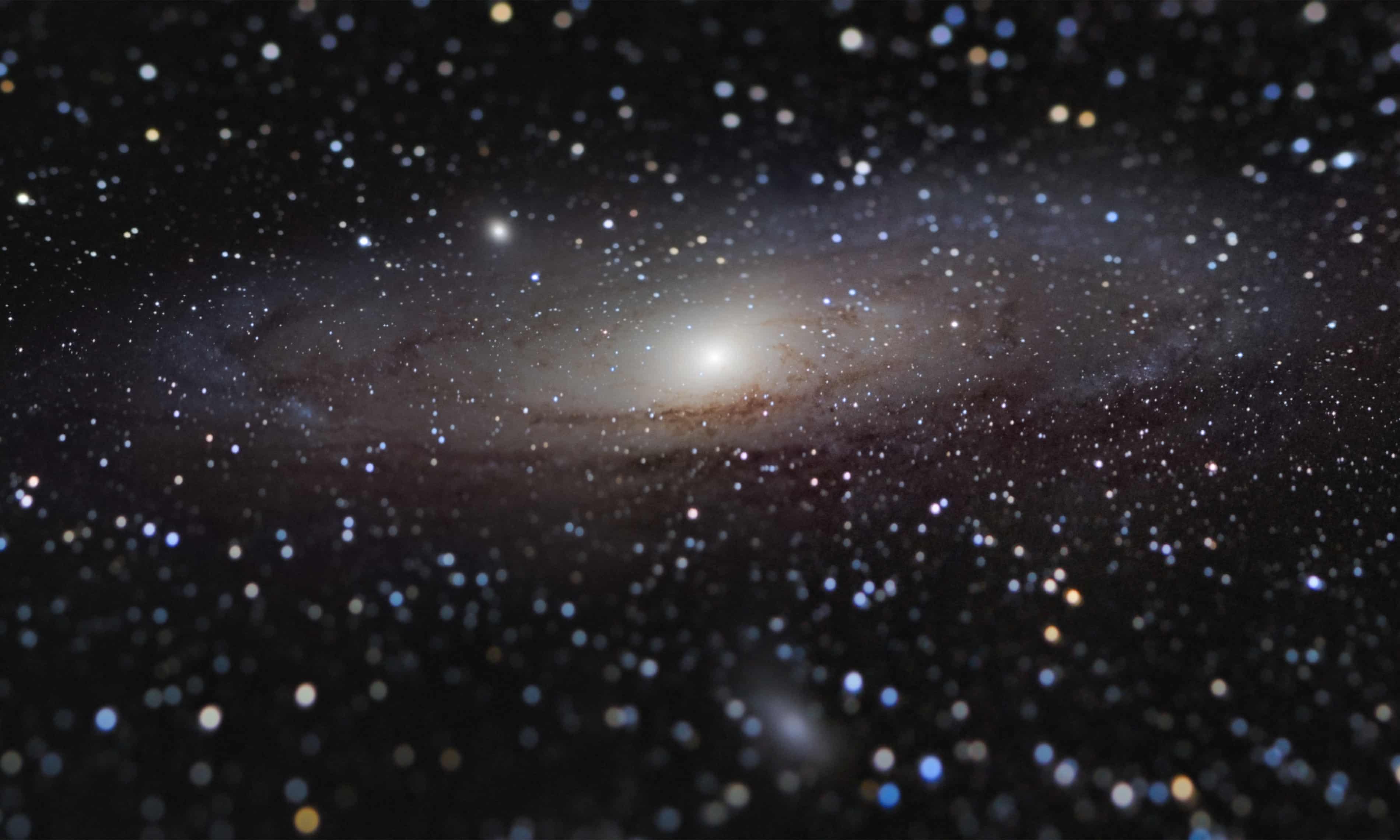
Astronomy photographer of the year (2020) winners – in pictures
Images of the Milky Way, California nebula and Andromeda galaxy are among the winners of the Insight Investment astronomy photographer of the year award. An exhibition of the winning pictures can be viewed at National Maritime Museum in Greenwich, south-east London, from 23 October
This gallery was amended on 13 September 2020 to correct the name of Julie F Hill’s work, Dark River.
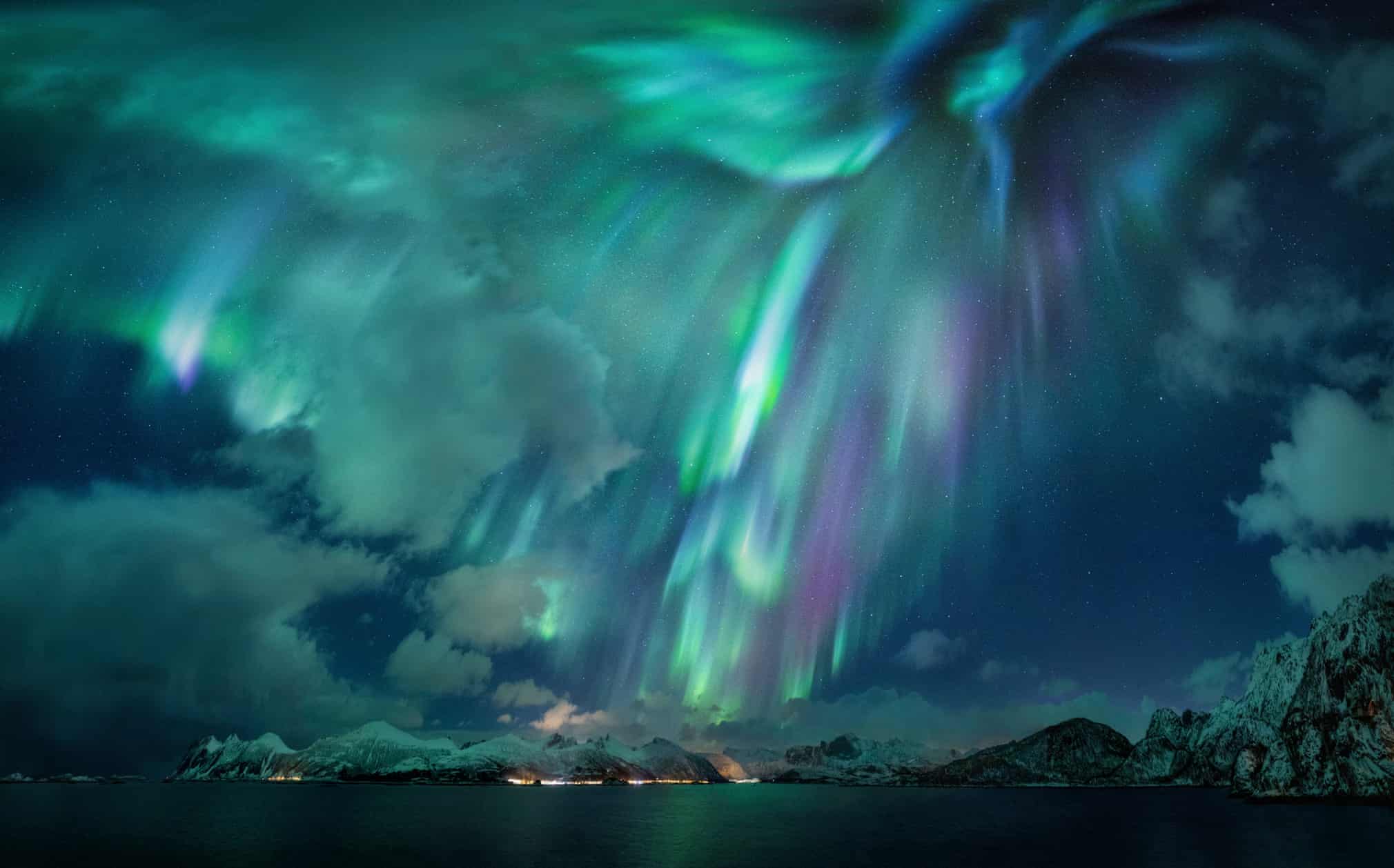
Aurorae category winner: The Green Lady by Nicholas Roemmelt (Germany)
The photographer had heard a lot of stories about the ‘lady in green’. Although he has had the chance to photograph the northern lights many times, he had never seen the green lady before. On a journey to Norway, she unexpectedly appeared with her magical green clothes, making the whole sky burn with green, blue and pink hues
Photograph: Nicholas Roemmelt/2020 astronomy photographer of the year
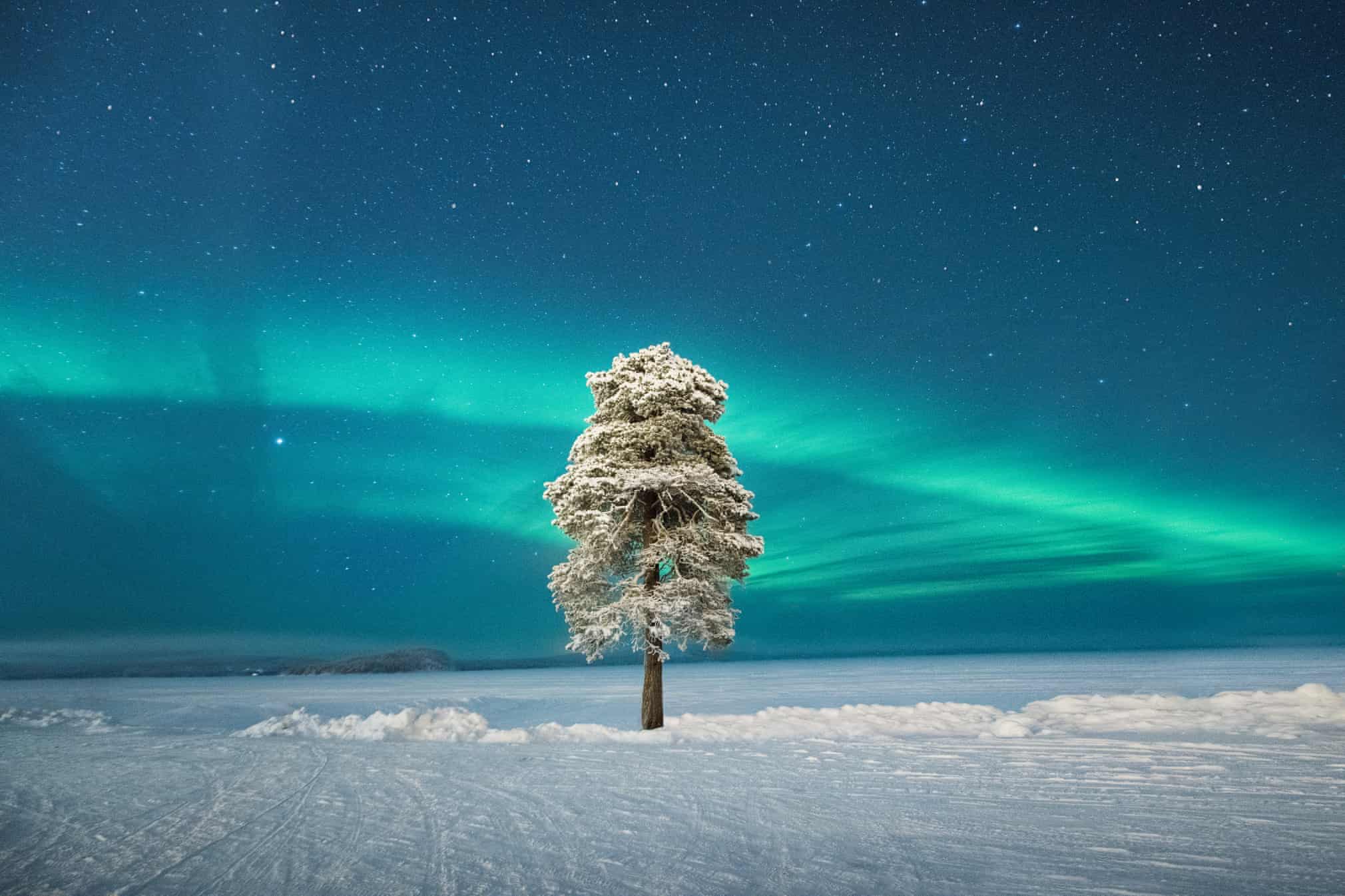
Aurorae category runner-up: Lone Tree under a Scandinavian Aurora by Tom Archer (UK)
The photographer decided to explore the area around the hotel on a very crisp -35C evening in Finnish Lapland. When he found this tree, he decided to wait for the misty conditions to change and could not believe his luck when the sky cleared and the aurora came out in the perfect spot. Archer spent about an hour photographing it before his camera started to lock up because of the harsh conditions, but by then he was happy to call it a night
Photograph: Tom Archer/2020 astronomy photographer of the year
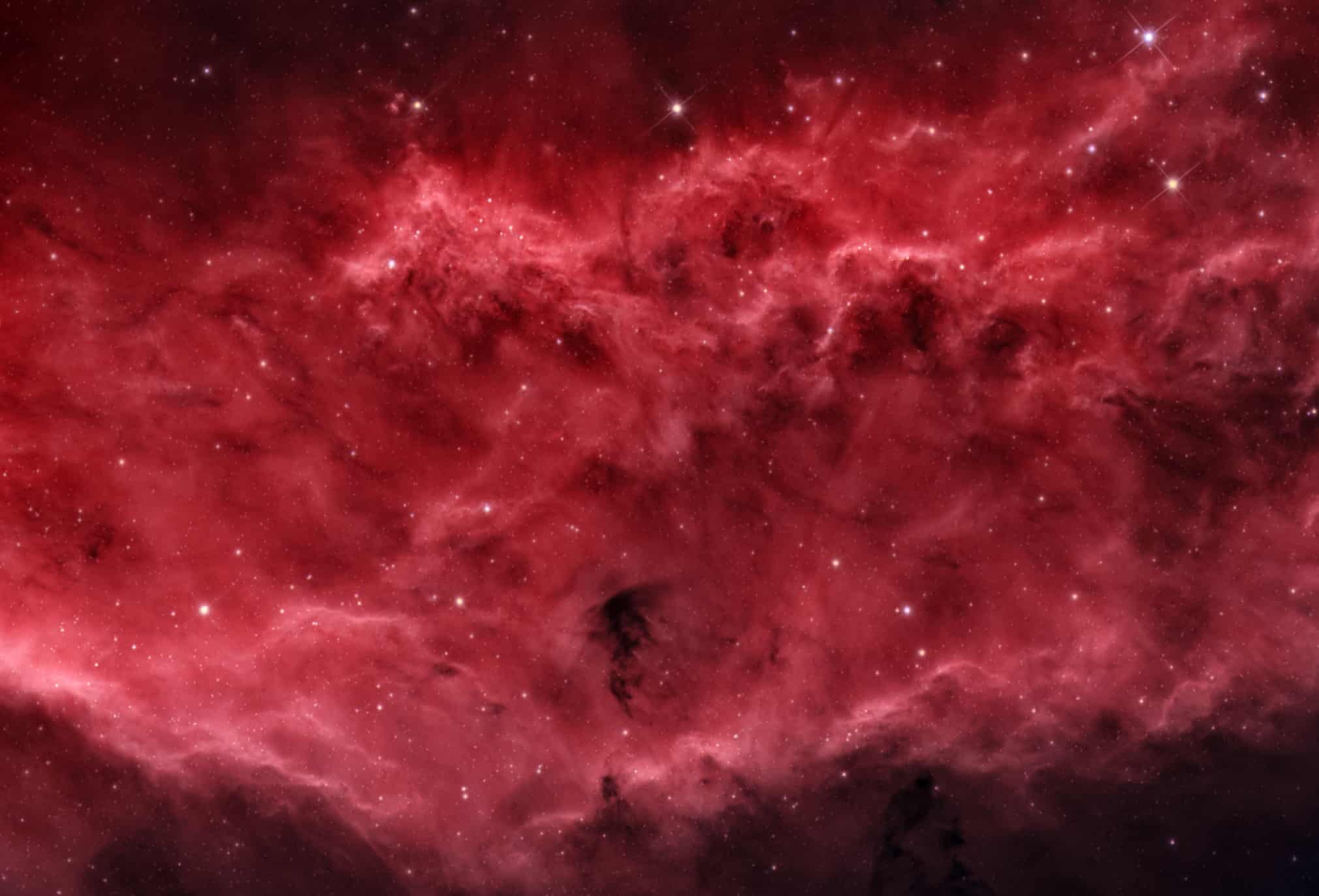
Sir Patrick Moore prize for best newcomer: Waves by Bence Toth (Hungary)
The image shows the central region of the California nebula. It captures the uncontrollable and vast energy of nature in a form that resembles the huge waves of a storm in the ocean. The RGB channels are used the create the colours of the stars, and all of the nebulosity are synthetised from the hydrogen-alpha and the SII channels. The colour assignment of the narrowband channels is done in a way to create an image close to true colour, but preserving the fine details and the depth provided by the narrowband filters
Photograph: Bence Toth/2020 astronomy photographer of the year
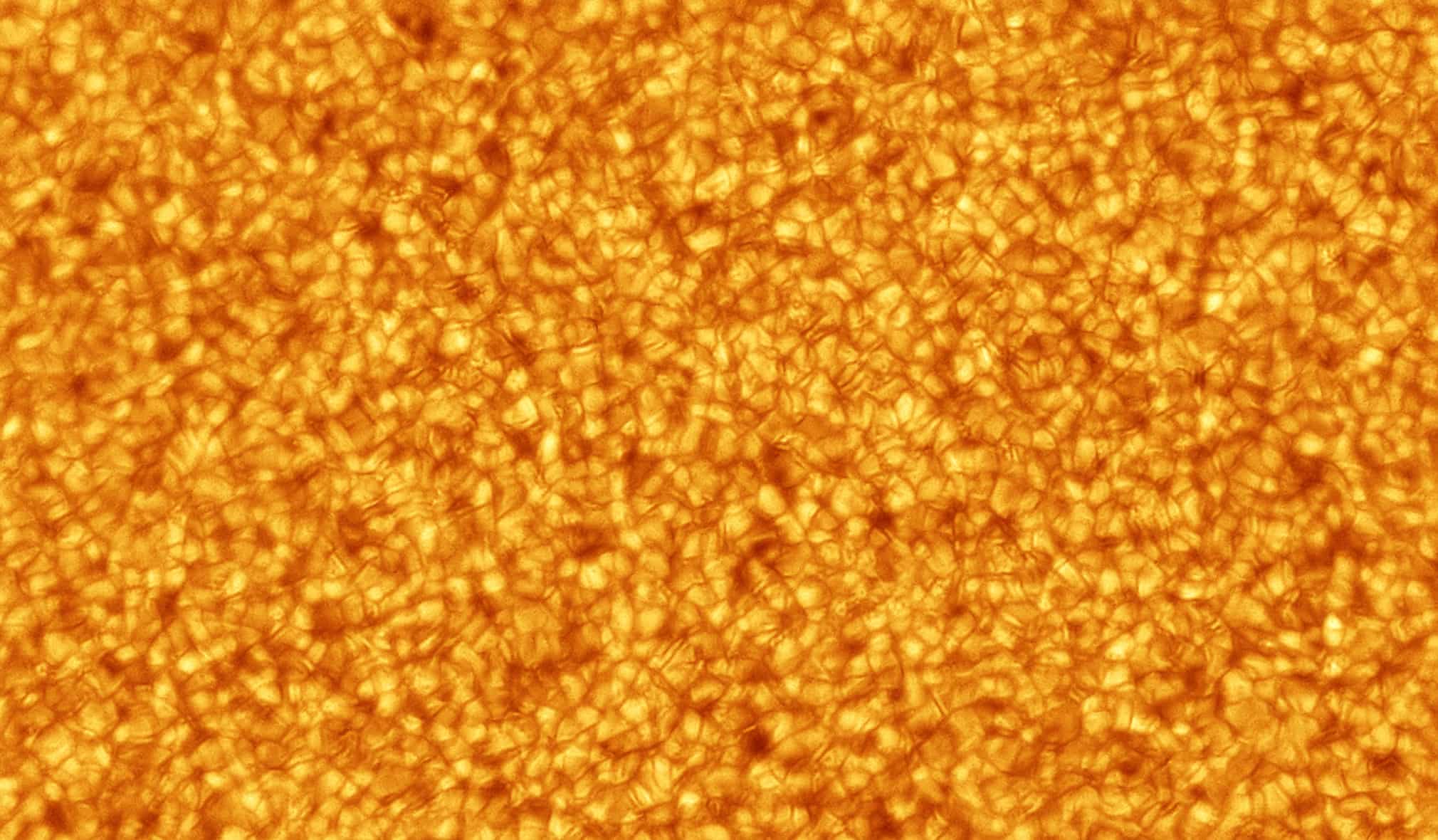
Our sun winner: Liquid Sunshine by Alexandra Hart (UK)
Solar minimum may be seen as a quiet sun and deemed dull in white light, but if you look closely at the small-scale structure, the surface is alive with motion. This surface is about 100km thick and the ever-boiling motion of these convection cells circulate, lasting for about 15-20 minutes. They are about 1,000km in size and create a beautiful ‘crazy paving’ structure
Photograph: 2020 astronomy photographer of the year
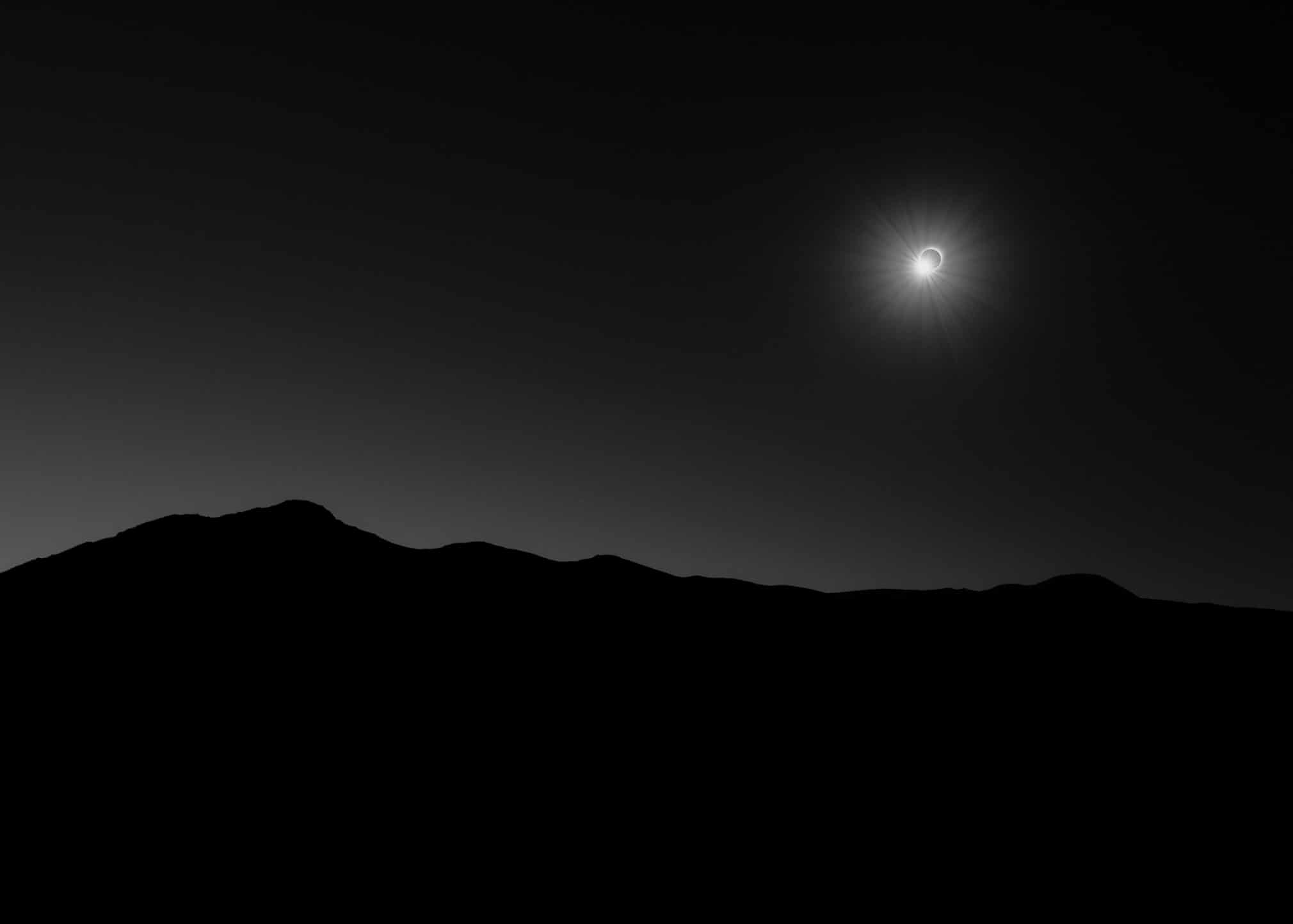
Our sun runner-up: 145 Seconds of Darkness by Filip Ogorzeski (Poland)
This image was taken during the total solar eclipse on 2 July 2019. The photographer travelled 8,000 miles (13,000km) from Poland to Chile to see the total solar eclipse. His plan was to create the most minimalist picture of this breathtaking event and capture the brief moment when nature freezes; the birds fly to their nests and the temperature drops during 145 seconds of darkness
Photograph: Filip Ogorzelski/2020 astronomy photographer of the year
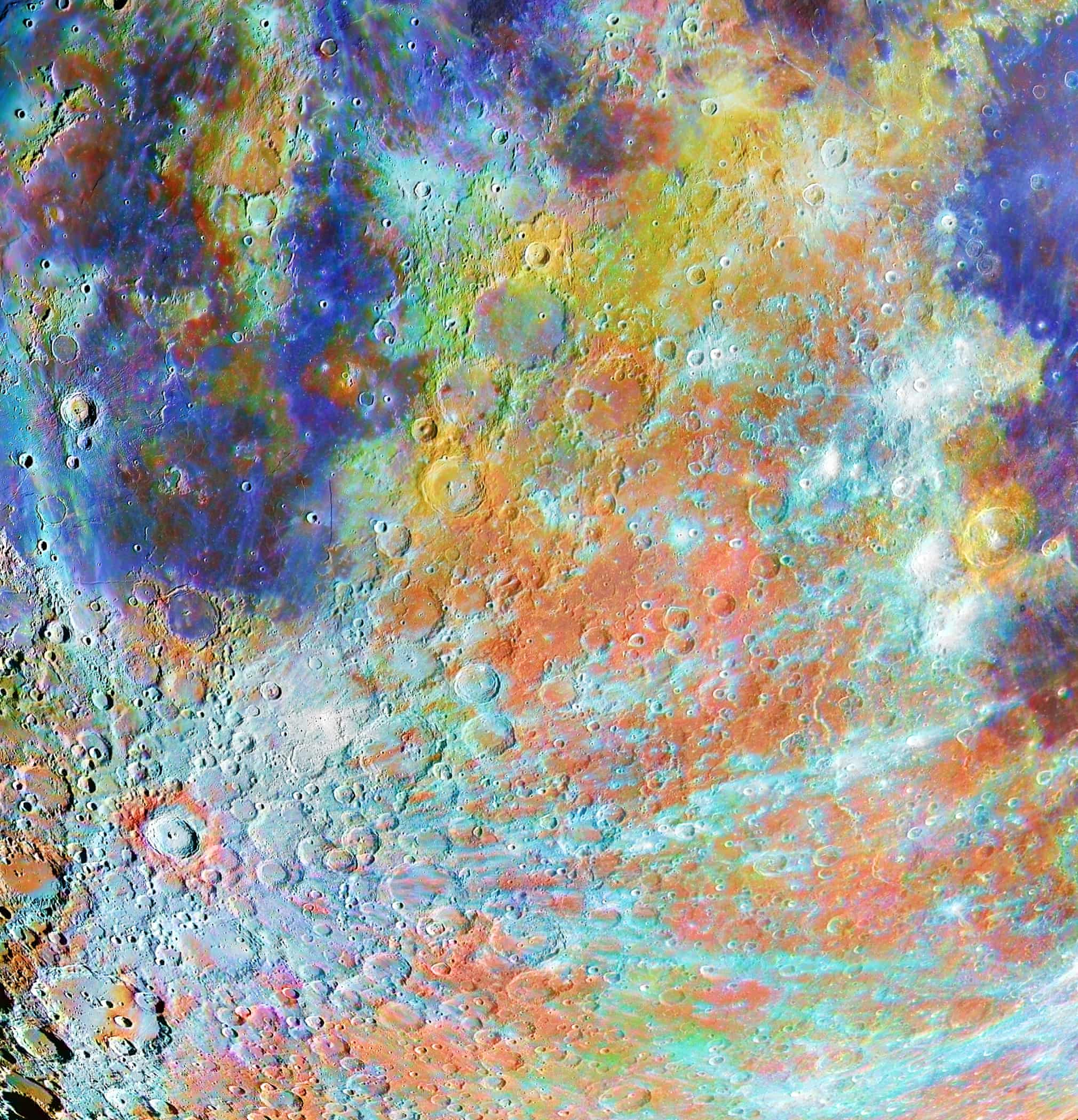
Our moon winner: Tycho Crater Region with Colours by Alain Paillou (France)
The Tycho crater is one of the most famous on the moon. This huge impact has left impressive scars on the lunar surface. With the colours of the soil, Tycho is even more impressive. This picture combines one session with a black-and-white camera, to capture the details and sharpness, and one session with a colour camera, to show the colours of the soils. These hues come mainly from metallic oxides in small balls of glass. The blue shows high titanium oxide concentration and the red shows high iron oxide concentration
Photograph: Alain Paillou/2020 astronomy photographer of the year
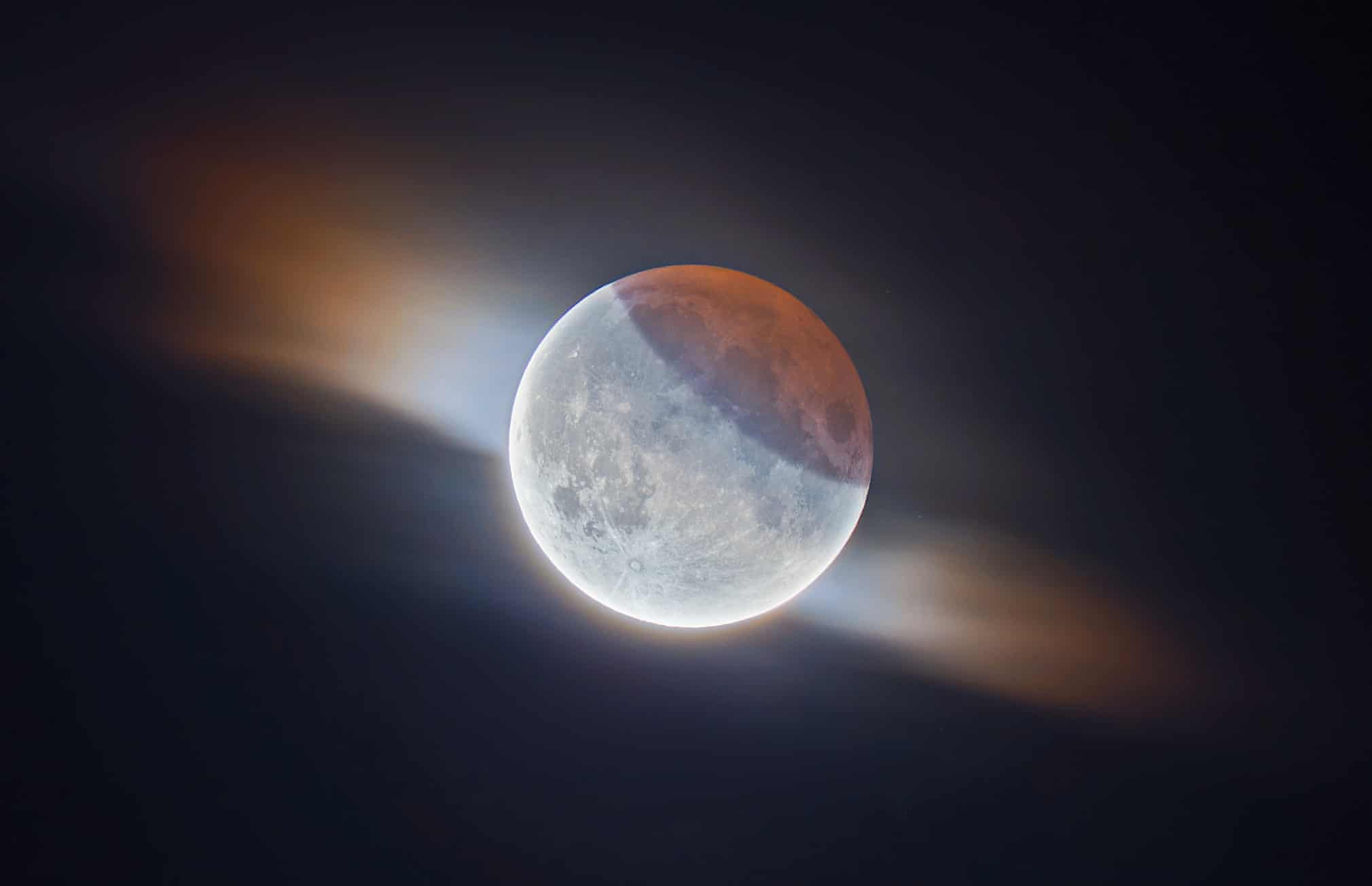
Our moon runner-up: Partial Lunar Eclipse with Clouds by Ethan Roberts (UK)
During the 2019 partial lunar eclipse, the photographer managed to capture this fantastic image of the moon while a small cloud passed in front of it. You can see the Earth’s shadow on the top right and its striking orange colour caused by the sun’s light passing through the atmosphere. This is a high dynamic range image, meaning the darker, shadowed region is correctly exposed as well as the much brighter parts of the moon
Photograph: Ethan Roberts/2020 astronomy photographer of the year
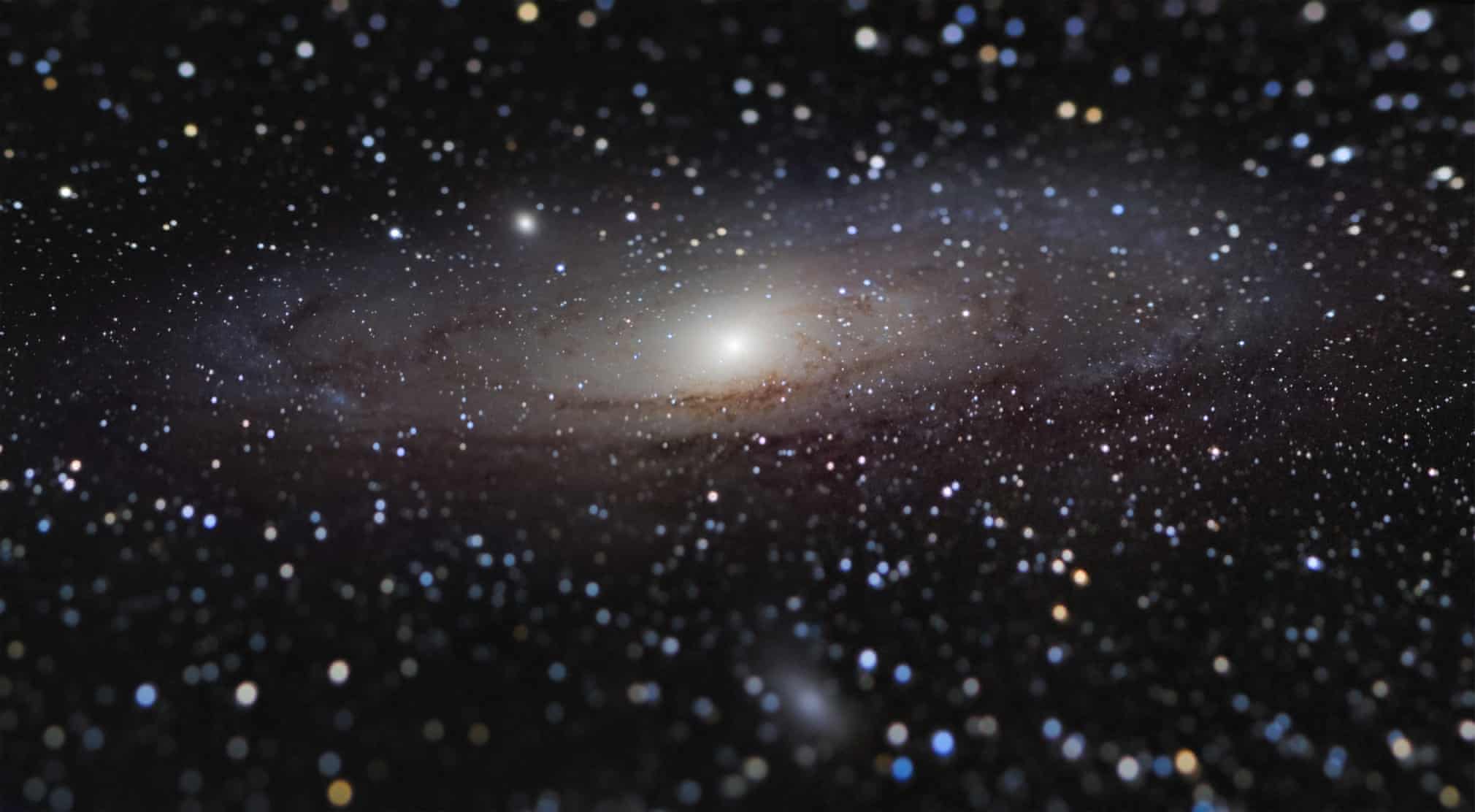
Overall winner and galaxies winner: Andromeda Galaxy at Arm’s Length? by Nicolas Lefaudeux (France)
Have you ever dreamed of touching a galaxy? This version of the Andromeda galaxy seems to be at arm’s length among clouds of stars. Unfortunately, this is just an illusion, as the galaxy is still 2m light years away. To obtain the tilt-shift effect, the photographer 3D printed a part to hold the camera at an angle at the focus of the telescope. The blur created by the defocus at the edges of the sensor gives this illusion of closeness to Andromeda
Photograph: Nicolas Lefaudeux/2020 astronomy photographer of the year

Galaxies runner-up: NGC 3628 with 300,000 Light Year Long Tail by Mark Hanson (US)
NGC 3628 is a popular galaxy target for both astrophotographers and visual observers, with its distinctive dust lane. Studies by professional astronomers have shown that the evolution of some galaxies are the product of a series of minor merges with smaller dwarf galaxies. This image is an epic undertaking of five years of exposures taken with three telescopes, although the majority of the exposure was in 2019. The goal of this mosaic is to show the tidal tail, measuring 300,000 light years in length
Photograph: Mark Hanson/2020 Astronomy photographer of the year
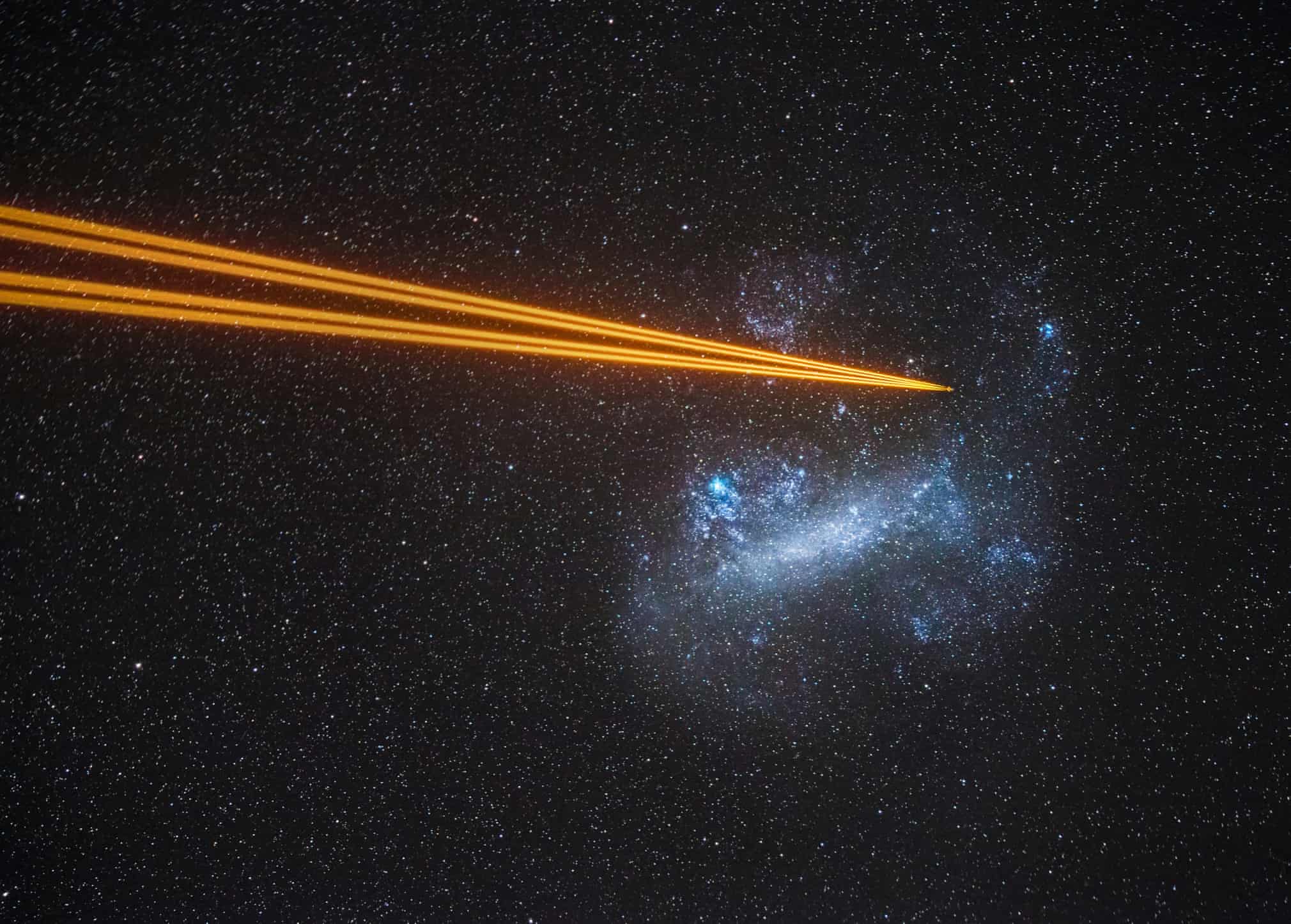
Galaxies highly commended: Attack on the Large Magellanic Cloud by Juan-Carlos Munoz-Mateos (Spain)
Despite what the title might imply, this image has nothing to do with space warfare. It shows four lasers of one of the telescopes at Paranal observatory pointing towards a globular cluster in the large magellanic cloud. The lasers excite sodium atoms located in a layer about 80–90km above the ground. This creates the four artificial ‘stars’ at the very ends of the laser beams
Photograph: Juan Carlos Munoz-Mateos/2020 Astronomy photographer of the year
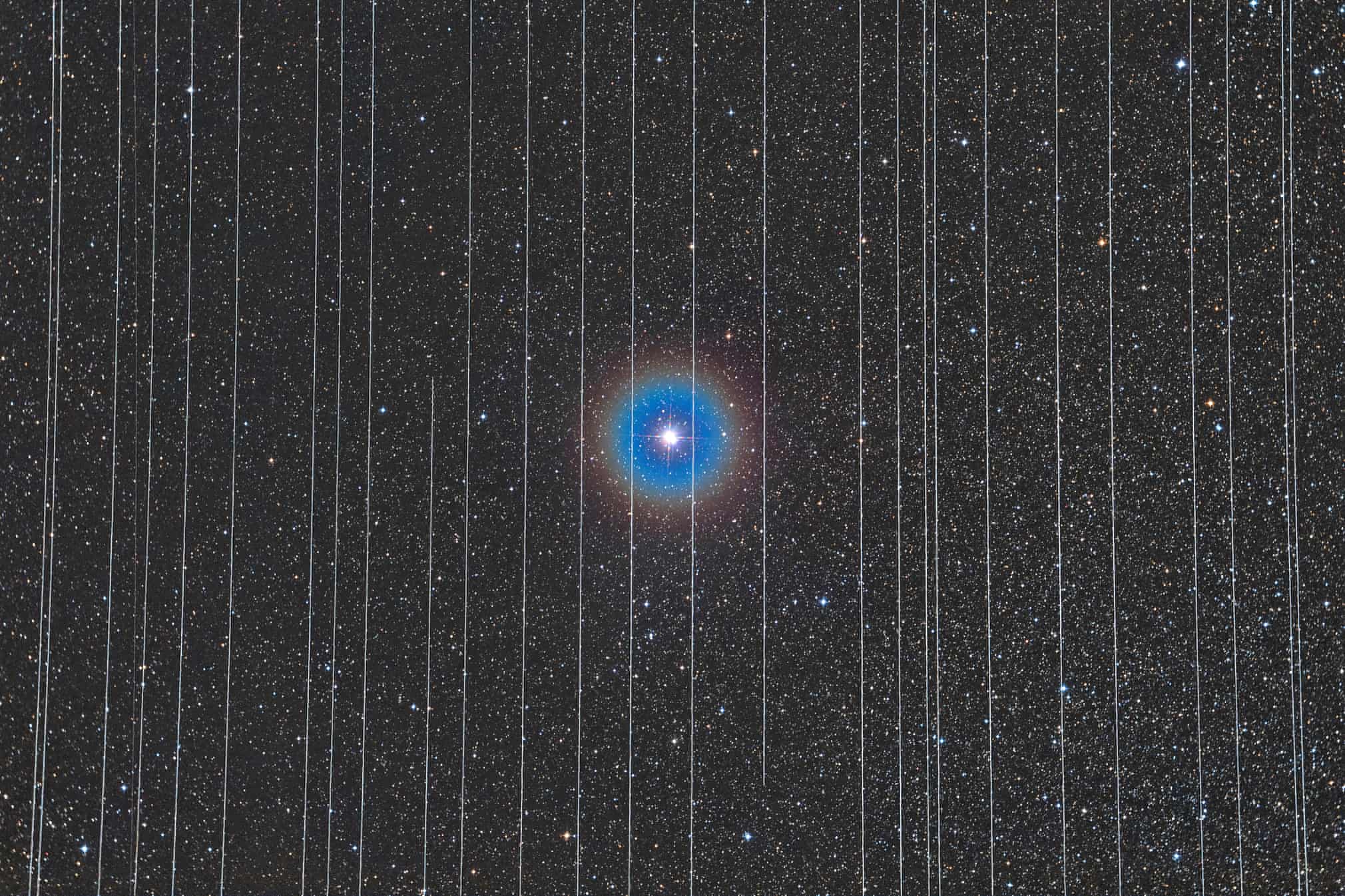
People and space winner: The Prison of Technology by Rafael Schmall (Hungary)
The star in the centre of the image is the Albireo double star, surrounded by the trails of moving satellites. How many more might there be by the time we reach next year’s competition? There could be thousands of moving dots in the sky. In order to create astrophotos, photographers have to carefully plan where to place the telescope, and this will be more difficult in the future with more satellites in the way
Photograph: Rafael Schmall/2020 Astronomy photographer of the year
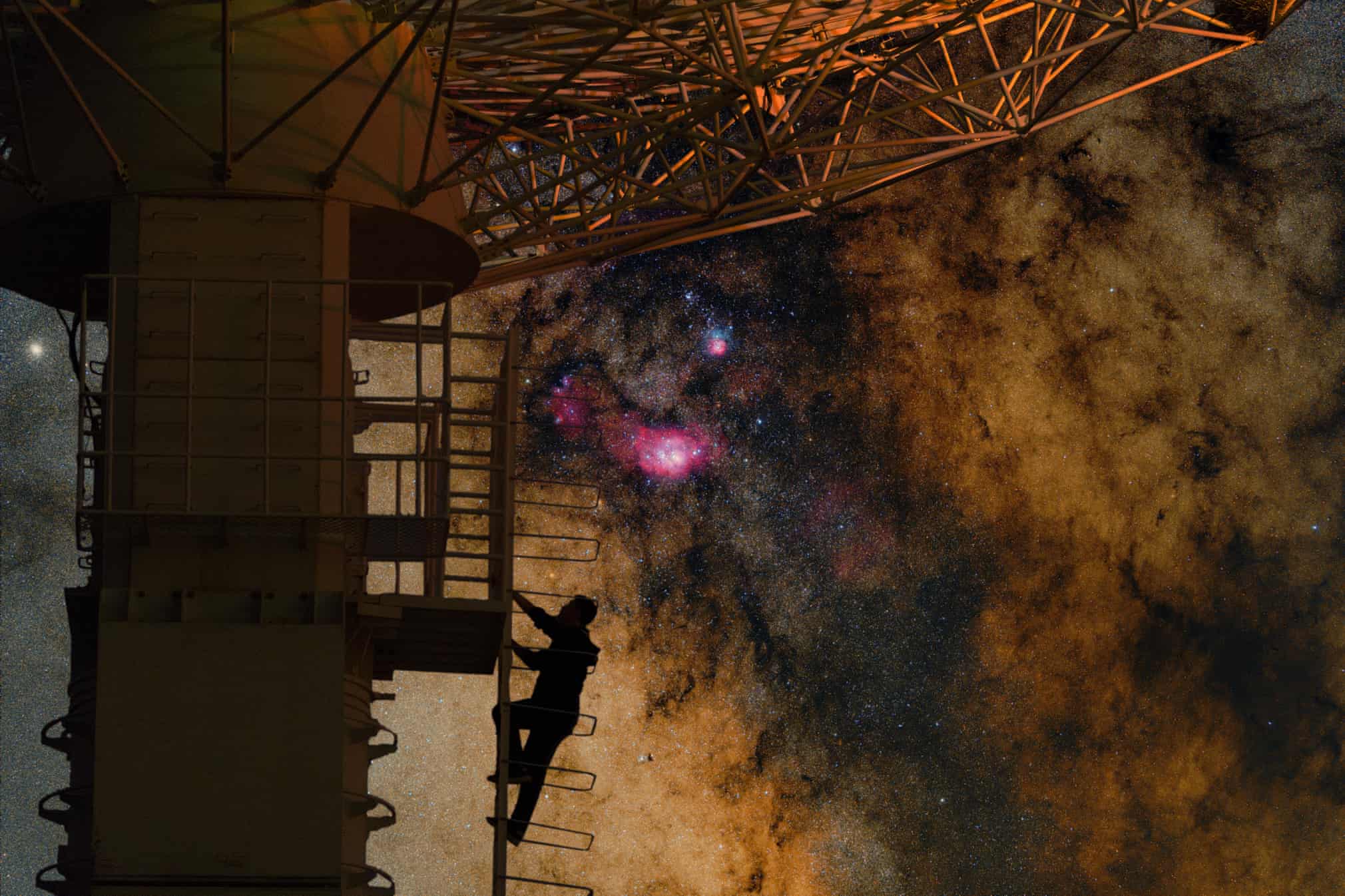
People and space runner-up: Observe the Heart of the Galaxy by Tian Li (China)
This image depicts the photographer climbing the radio telescope and Mingantu solar radio telescope array. First the photographer tested and moved his camera so that the M8 and M20 nebulae would appear right next to the telescope. After taking the foreground image, he moved his camera a little bit but still pointing at the same location in the sky, and captured the background with an equatorial mount
Photograph: Tian Li/2020 Astronomy photographer of the year
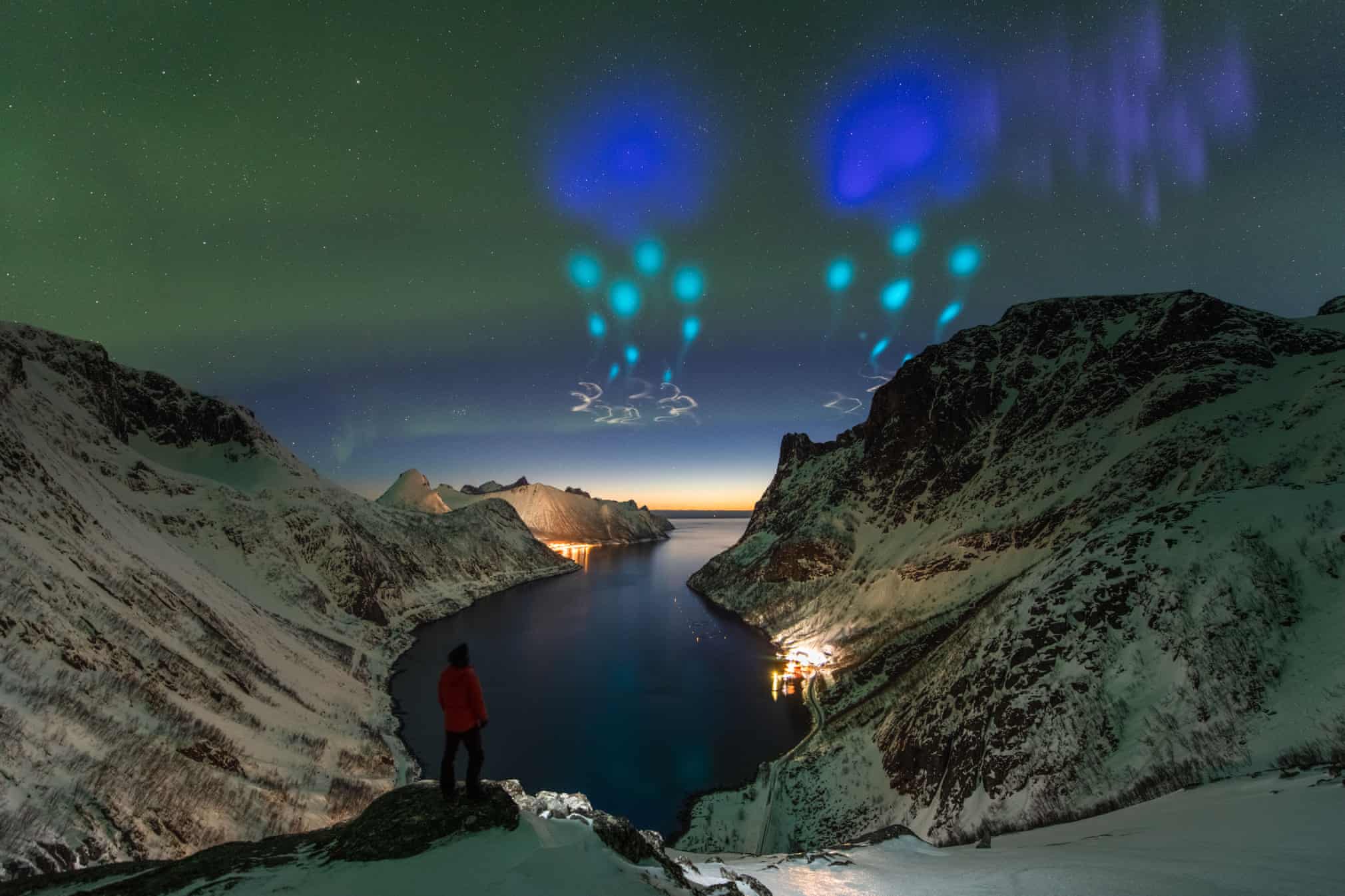
People and space. Highly commended: Azure Vapor Tracers by Yang Sutie (China)
At the top of fjords in Arctic Norway, the photographer was met with an unknown sky. Was it aliens? Was it the supernatural? He captured a series of photos to record the night and didn’t know until the next day that the colours were actually created by the auroral zone upwelling rocket experiment from Andøya Space Centre, which dispersed gas tracers to probe winds in Earth’s upper atmosphere
Photograph: Yang Sutie/2020 Astronomy photographer of the year
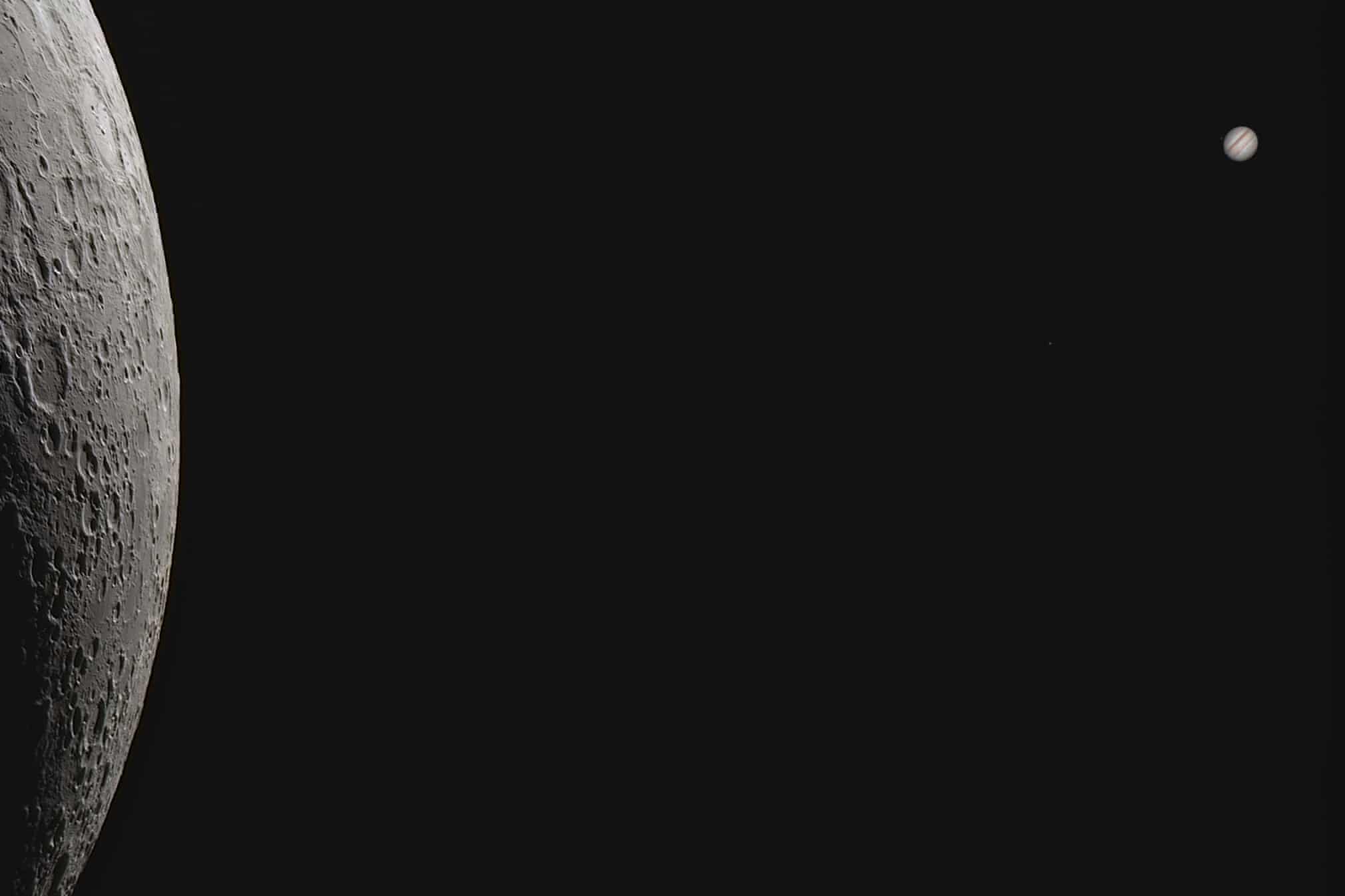
Planets, comets and asteroids winner: Space Between US… by Łukasz Sujka (Poland)
This image shows the close alignment of the moon and Jupiter that happened on 31 October 2019. In the full resolution picture, three of Jupiter’s moons also visible. This small project is a big challenge that involves a lot of luck and good conditions. To capture this phenomenon in such a big scale was quite demanding in data acquisition as Jupiter and the moon travelled across the sky quite fast. It happened in altitude only 9 degrees above the horizon
Photograph: Łukasz Sujka/2020 Astronomy photographer of the year
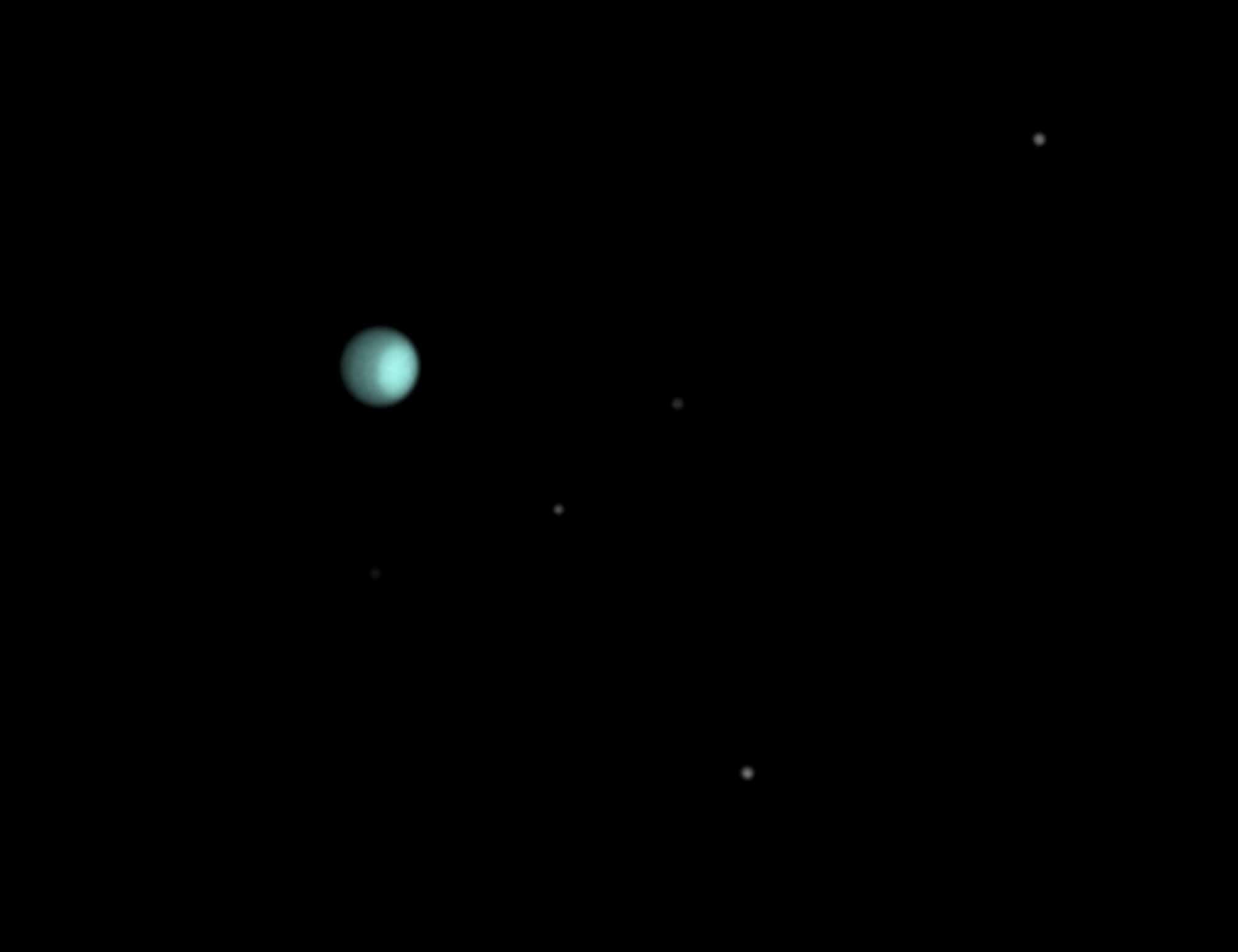
Planets, comets and asteroids runner-up: The Outer Reaches by Martin Lewis (UK)
On 3 December 2019, the cloud cleared around mid-evening to reveal steady skies over the photographer’s home. He turned his telescope to Uranus and started gathering video frames using an infrared filter to bring out cloud details on this otherwise visually bland planet. For an object as faint as Uranus, this means individual frames are noisy. That night the lighter polar region could be easily seen – an exceptional situation and a testament to the unusually steady skies
Photograph: Martin Lewis/2020 Astronomy photographer of the year
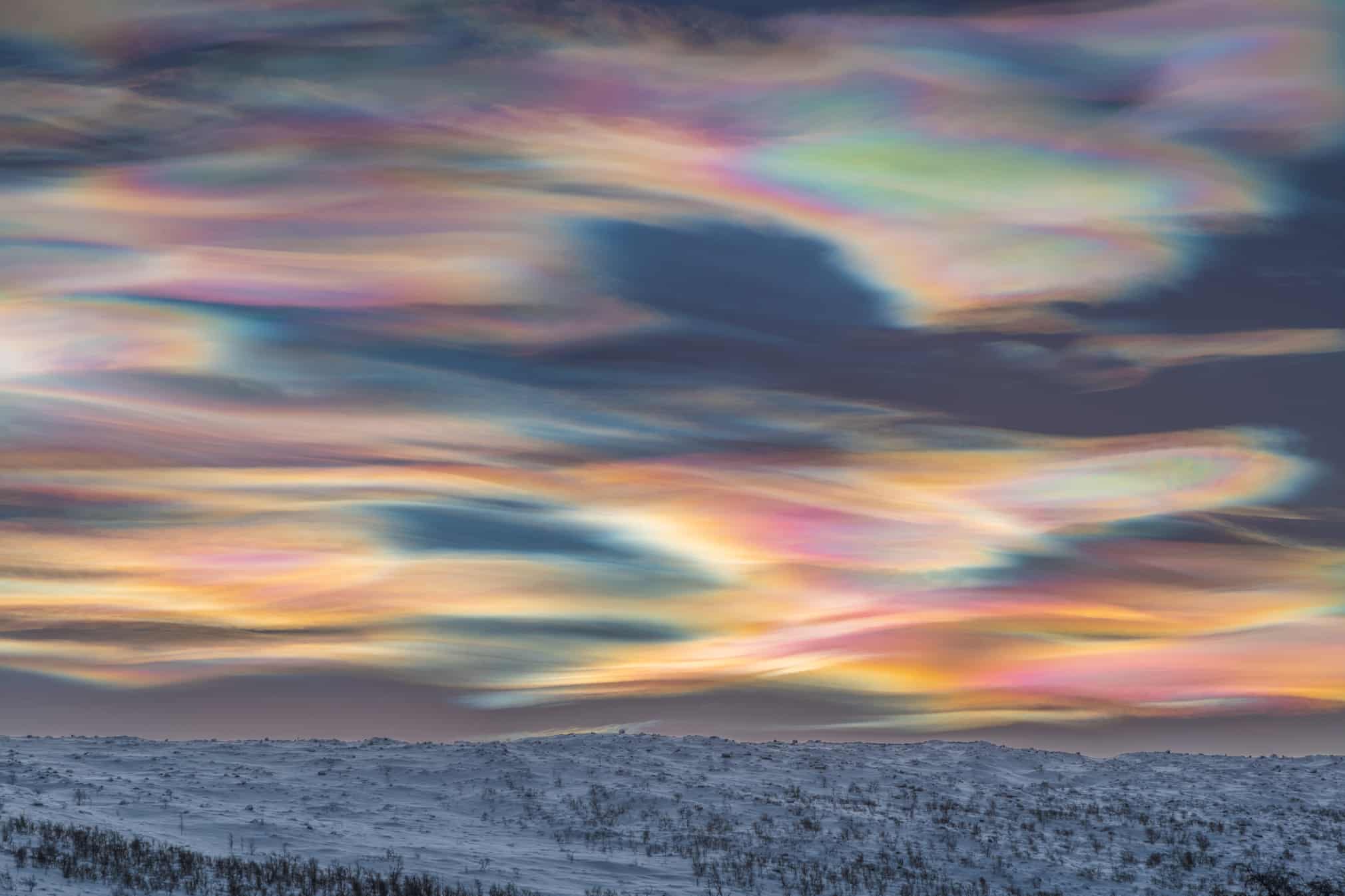
Skyscapes winner: Painting the Sky by Thomas Kast (Germany)
The photographer was searching for clear skies in Finnish Lapland to capture the beauty of a polar night and could not believe his eyes when he saw what was waiting behind the clouds. Polar stratospheric clouds are something Kast had been searching for many years and had seen only in photographs until that day. He took his camera on to a frozen river to get a good view and started to take photos. The clouds slowly changed their shape and colours to create a painterly image
Photograph: Thomas Kast/2020 Astronomy photographer of the year
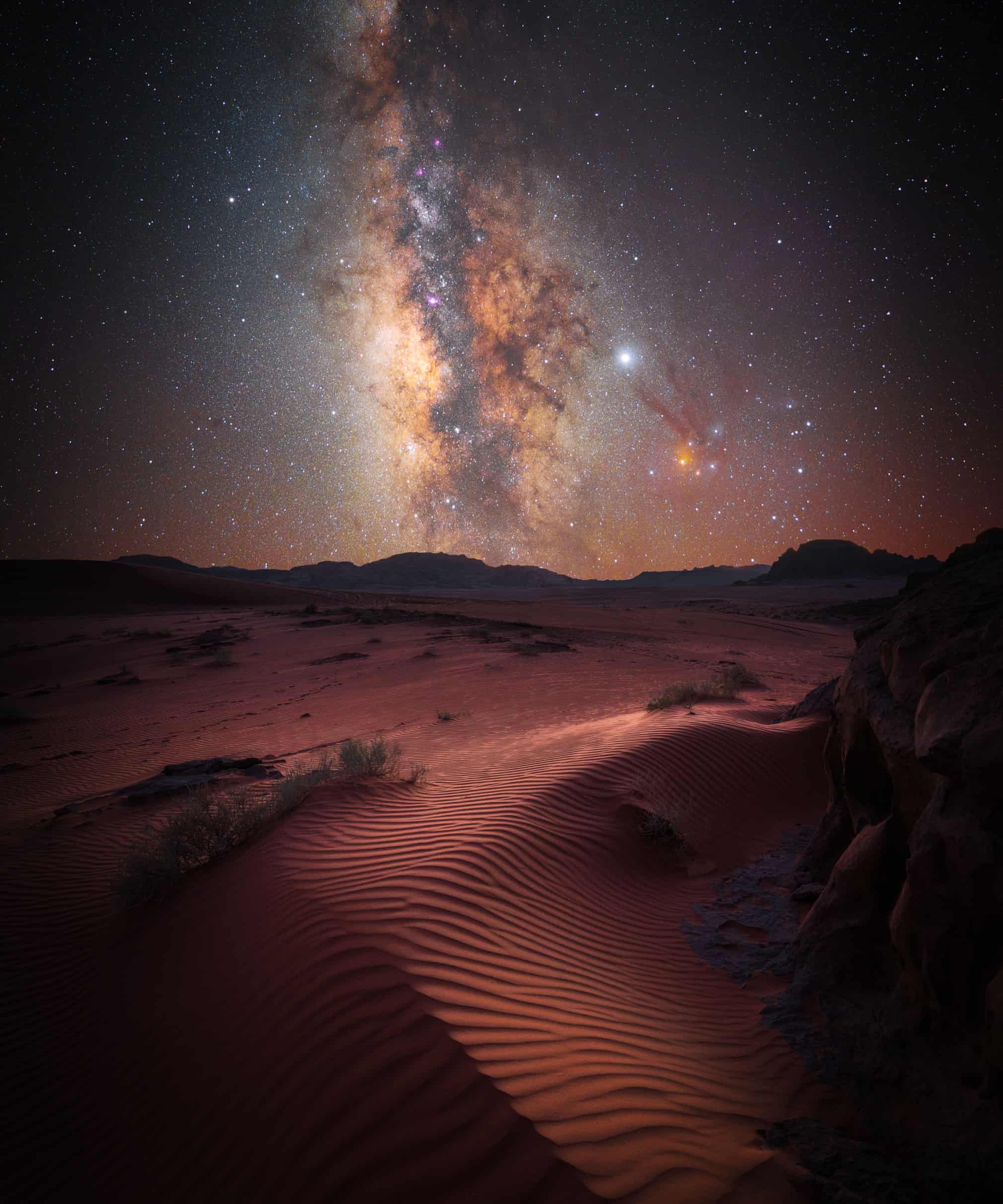
Skyscapes runner-up: Desert Magic by Stefan Leibermann (Germany)
The photographer took this image during a trip through Jordan. He stayed for three days in the desert at Wadi Rum. The photographer tried to capture the amazing starry sky over the desert. He used a star tracker device to capture the image. Leibermann found this red dune as a foreground and snapped the imposing Milky Way centre in the sky
Photograph: Stefan Leibermann/2020 Astronomy photographer of the year
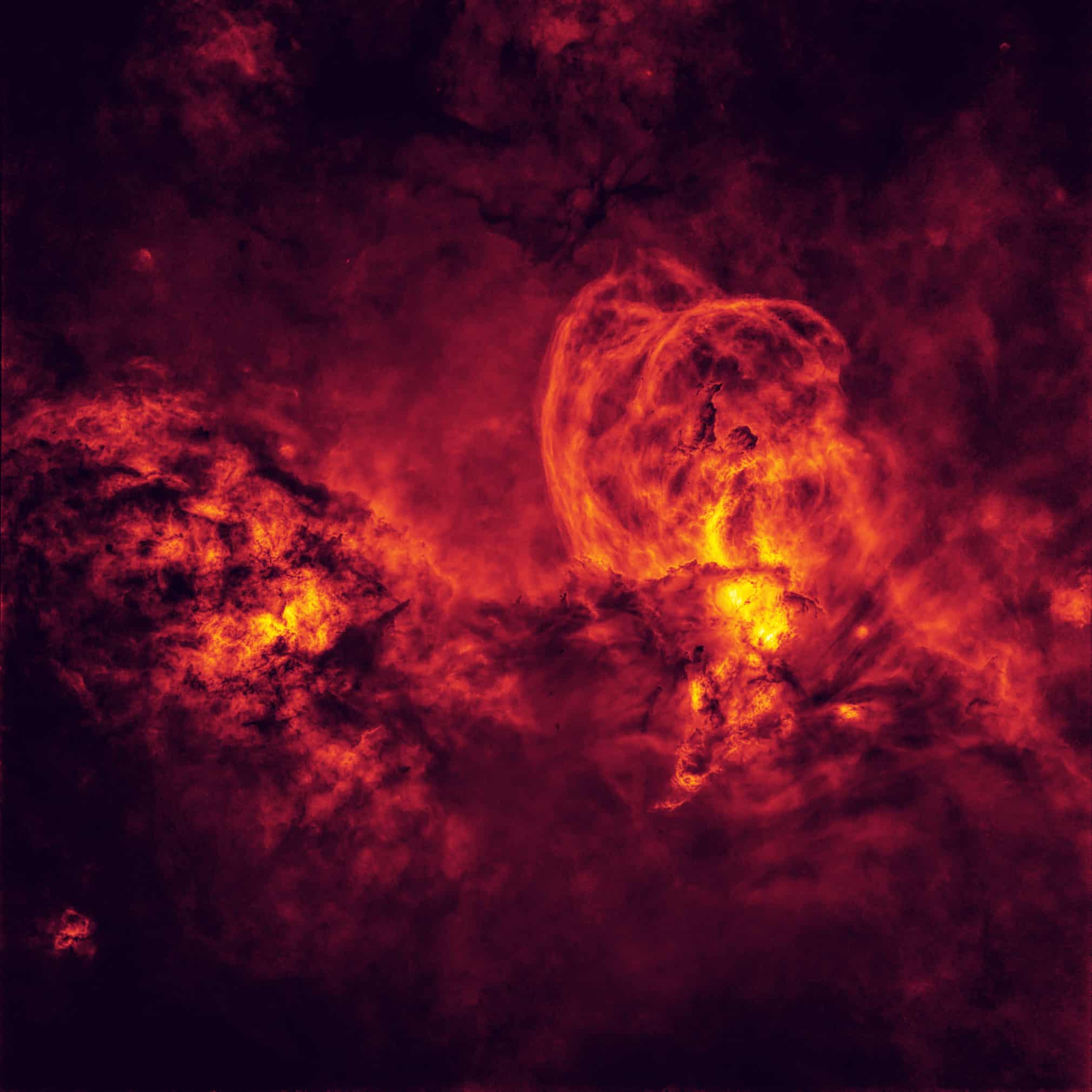
Stars and nebulae winner: Cosmic Inferno by Peter Ward (Australia)
NGC 3576 is a well-known nebula in southern skies, but is shown here without any stars. Software reveals just the nebula, which has been mapped into a false colour palette. The scene takes on the look of a celestial fire-maelstrom. The image is intended to reflect media images taken in Australia in 2019 and 2020, where massive bushfires caused the destruction of native forests and have claimed more than 12m acres of land. It shows nature can act on vast scales and serves as a stark warning that our planet needs nurturing
Photograph: Peter Ward/2020 Astronomy photographer of the year
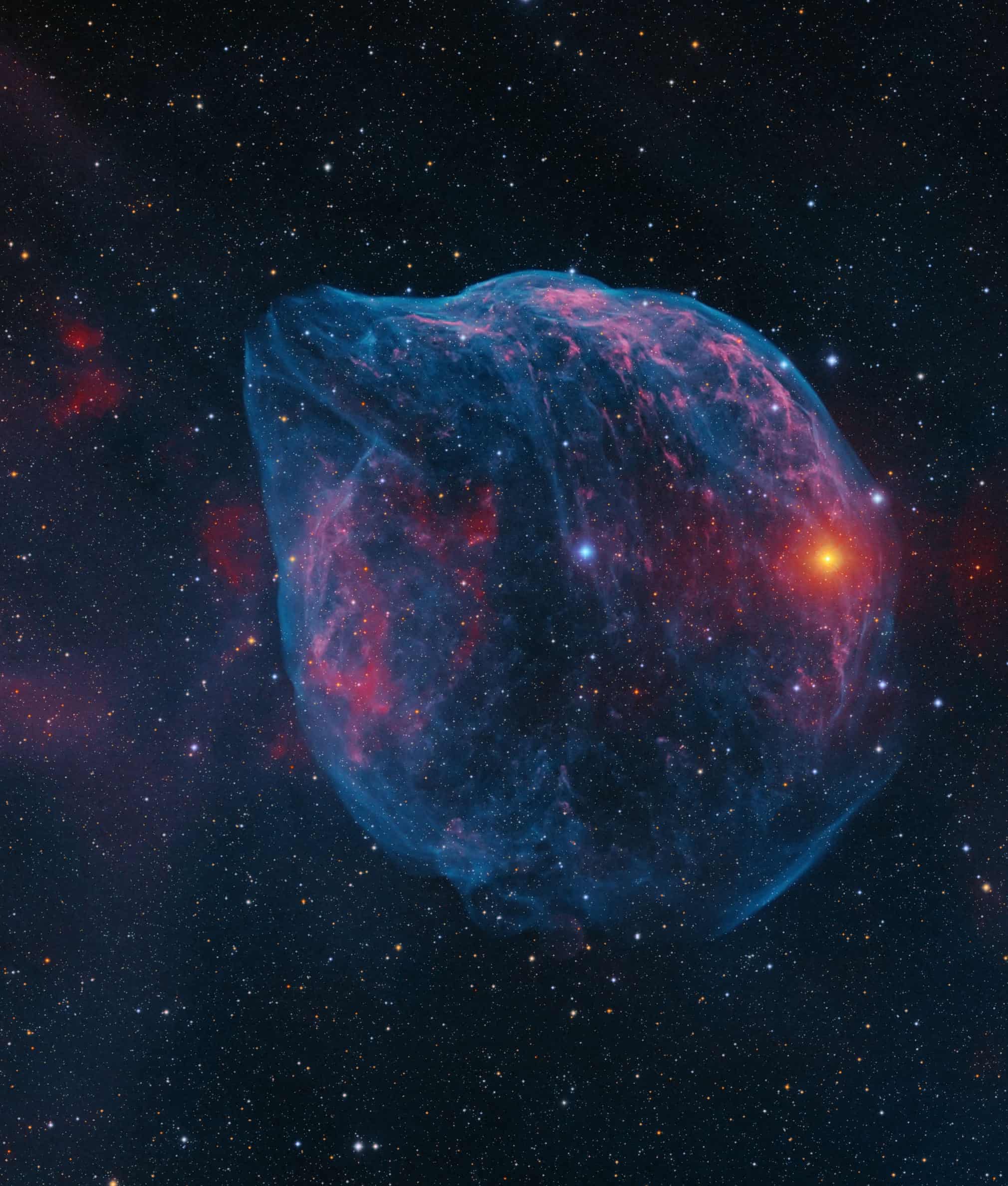
Stars and nebulae runner-up: The Dolphin Jumping out of an Ocean of Gas by Connor Matherne (USA)
This target is officially known as Sh2-308 but the photographer has always enjoyed calling it the Dolphin nebula. It is a bubble of gas being shed by the bright blue star in the centre of the image as it enters its pre-supernova phase. The red star, to the right, could possibly be influencing the shape too and might be responsible for the bill of the dolphin. While it will not explode in our lifetimes, seeing the warning signs is valuable
Photograph: Connor Matherne/2020 Astronomy photographer of the year
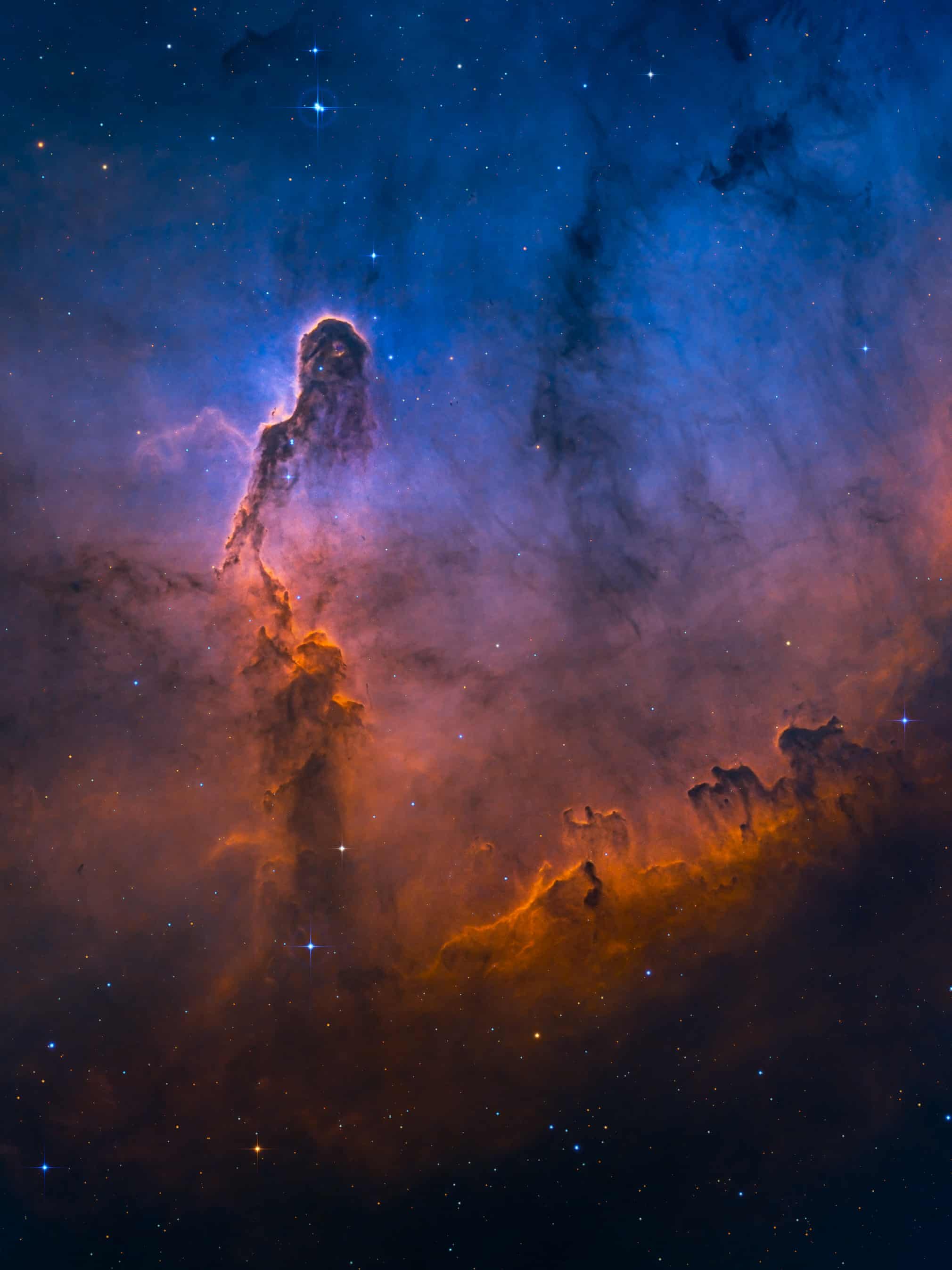
Stars and nebulae highly commended: The Misty Elephant’s Trunk by Min Xie (US)
The photographer imaged IC 1396, known as the Elephant’s Trunk, in the Hubble palette from my light-polluted backyard in Coppell, Texas. This image presents the Elephant’s Trunk surrounded by the emission clouds with a misty feeling and an emphasised blue doubly-ionised oxygen area as the background. It gives the feeling of the trunk emerging from the distance
Photograph: Min Xie/2020 Astronomy photographer of the year
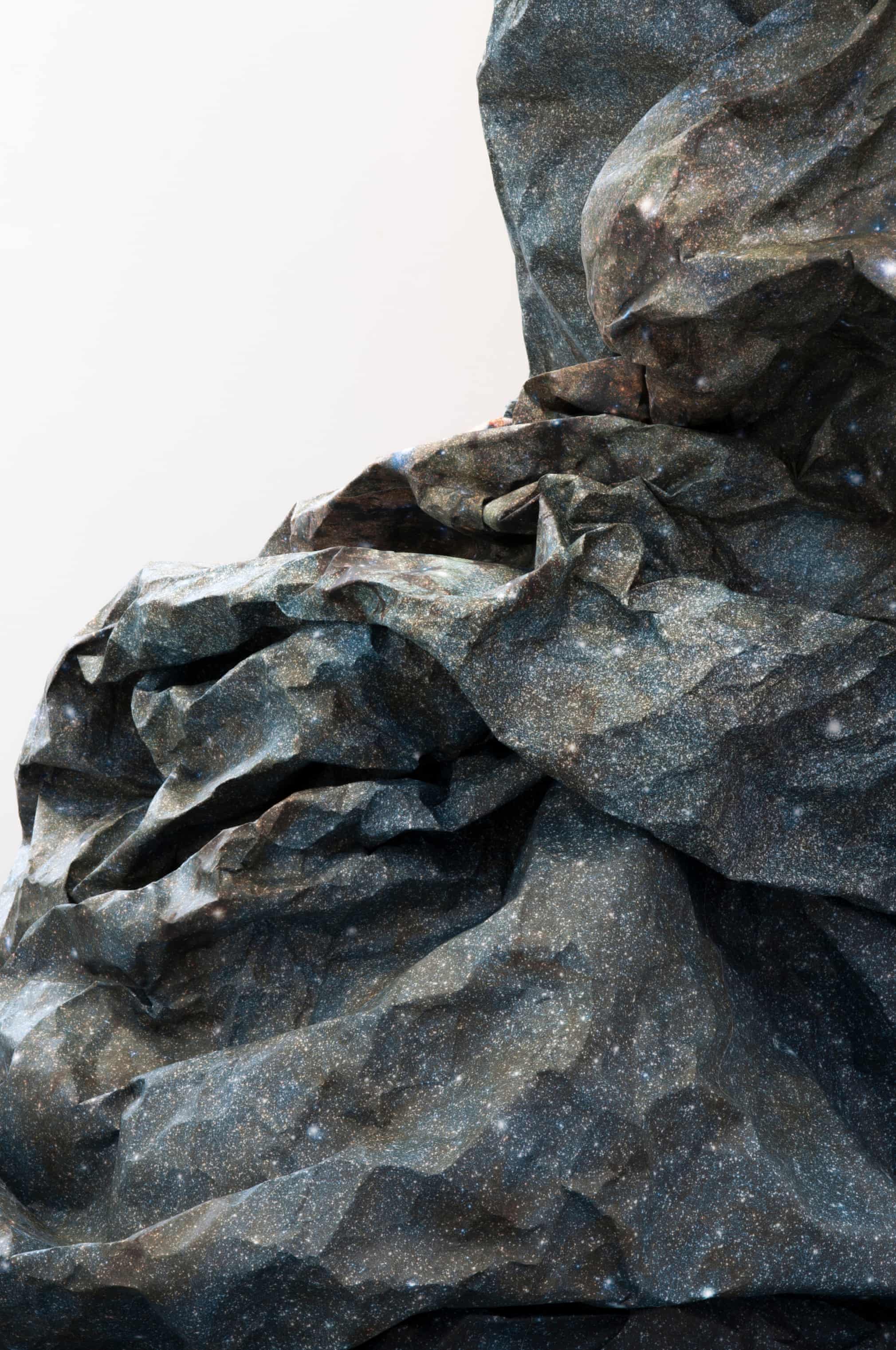
Annie Maunder prize for image innovation: Dark River by Julie F Hill (UK)
Dark River is a sculptural work that maps, or mirrors, the Milky Way using one of the largest images ever made of its central areas. This gigapixel image of the Milky Way, showing about 84m stars, is reworked into a sculptural ‘affective space’ that affords a bodily and imaginative engagement with the viewer. The image was obtained with the Vista survey telescope at ESO’s Paranal observatory in Chile and contains nearly 9bn pixels
Photograph: Julie F Hill/2020 Astronomy photographer of the year
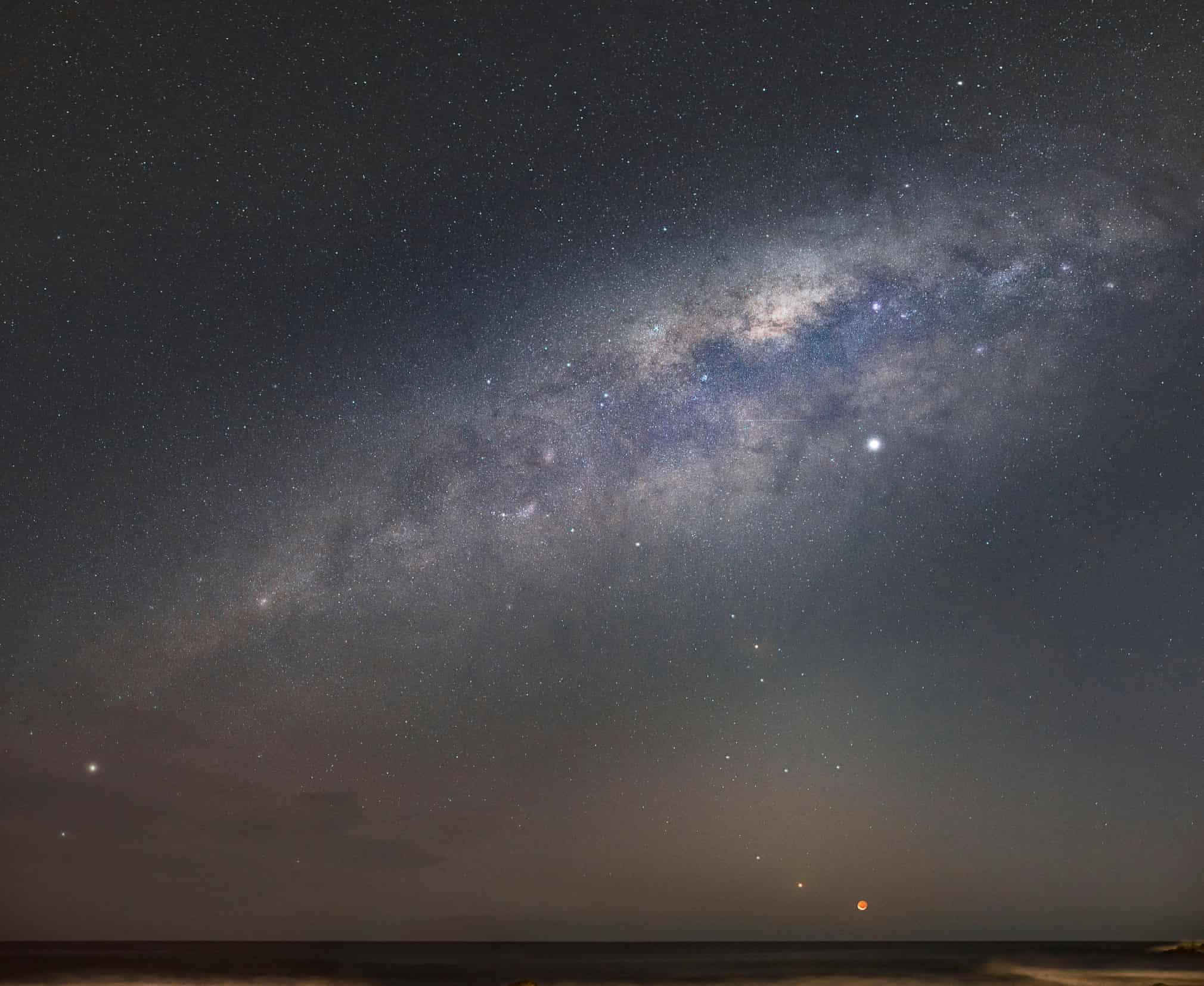
Young competition winner: The Four Planets and the Moon ©Alice Fock Hang (Reunion), aged 11
Photographing a planetary alignment requires rigour and patience but also a lot of luck. That evening, despite preparing everything for a week, the photographer encountered clouds. The magic started after sunset, where the moonset, Venus, Mercury, the star Antares, Jupiter and Saturn could be seen over the Indian Ocean. By looking at the sky map. Note also the presence of Alpha Centauri on the left of the image as well as our immense galaxy, the Milky Way
Photograph: Alice Fock Hang/2020 Astronomy photographer of the year

Young competition runner-up: Detached Prominences by Thea Hutchinson (UK), aged 13
This is the sun, captured from London in September 2019. This is a composite of two images: one exposed for the solar prominences and the other for the solar disc. The solar disc image was inverted, converted to false colour and blended with the prominence in Photoshop as a dark layer. This was the first time the photographer used this technique
Photograph: Thea Hutchinson/2020 Astronomy photographer of the year